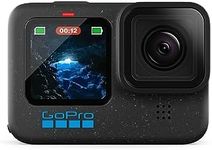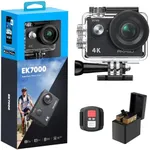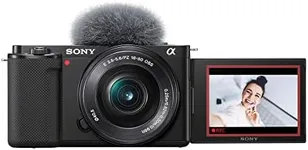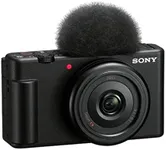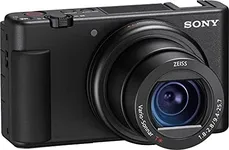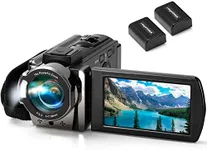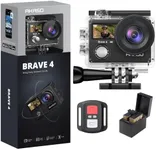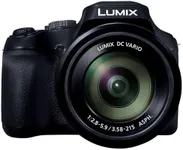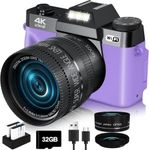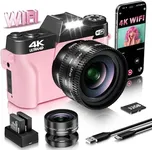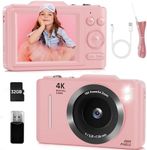Buying Guide for the Best Starter Vlog Camera
Choosing the right starter vlog camera can make a significant difference in the quality of your content and your overall vlogging experience. When selecting a camera, it's important to consider various specifications that will impact your video quality, ease of use, and versatility. Understanding these key specs will help you make an informed decision that aligns with your vlogging needs and goals.ResolutionResolution refers to the number of pixels that make up the video image. Higher resolution means more detail and clarity. For vlogging, Full HD (1080p) is generally sufficient and provides good quality for most platforms. However, if you want to future-proof your content or plan to do more professional work, 4K resolution might be worth considering. Choose a resolution based on the quality you want to achieve and the platform where you will be sharing your videos.
Frame RateFrame rate is the number of frames captured per second. Common frame rates are 24fps, 30fps, and 60fps. A higher frame rate results in smoother motion, which is particularly useful for action shots or slow-motion effects. For standard vlogging, 30fps is usually adequate. If you plan to include a lot of fast-paced action or slow-motion footage, consider a camera that can shoot at 60fps or higher.
AutofocusAutofocus is the camera's ability to automatically focus on the subject. Good autofocus is crucial for vlogging, as it ensures that you remain in focus even when moving around. Look for cameras with reliable and fast autofocus systems, especially if you plan to vlog on the go or in dynamic environments. Test the autofocus performance if possible, or read reviews to ensure it meets your needs.
StabilizationStabilization helps reduce camera shake, resulting in smoother and more professional-looking videos. There are two types: optical and electronic. Optical stabilization is generally more effective but can be more expensive. If you plan to vlog while walking or moving, stabilization is a key feature to look for. Choose a camera with good stabilization to ensure your videos are steady and watchable.
Audio QualityAudio quality is just as important as video quality in vlogging. Built-in microphones on cameras can vary in quality, and external microphone support can significantly improve your audio. Look for cameras with a microphone input if you plan to use an external mic. Consider the environments you'll be recording in and whether you need features like wind noise reduction or directional audio.
PortabilityPortability refers to the size and weight of the camera. A more portable camera is easier to carry around and use in various locations. For vlogging, a compact and lightweight camera is often preferable, especially if you plan to vlog while traveling or on the move. Consider how often you'll be carrying the camera and choose one that balances portability with the features you need.
Battery LifeBattery life determines how long you can record before needing to recharge or replace the battery. Longer battery life is beneficial for extended vlogging sessions or when you're away from power sources. Check the estimated battery life of the camera and consider purchasing extra batteries if needed. Choose a camera with sufficient battery life to match your vlogging habits and recording duration.
ConnectivityConnectivity options, such as Wi-Fi, Bluetooth, and USB, allow you to transfer videos to other devices, control the camera remotely, and live stream. These features can enhance your vlogging workflow and make it easier to share content. Consider what connectivity options are important for your vlogging style and choose a camera that offers the necessary features.
